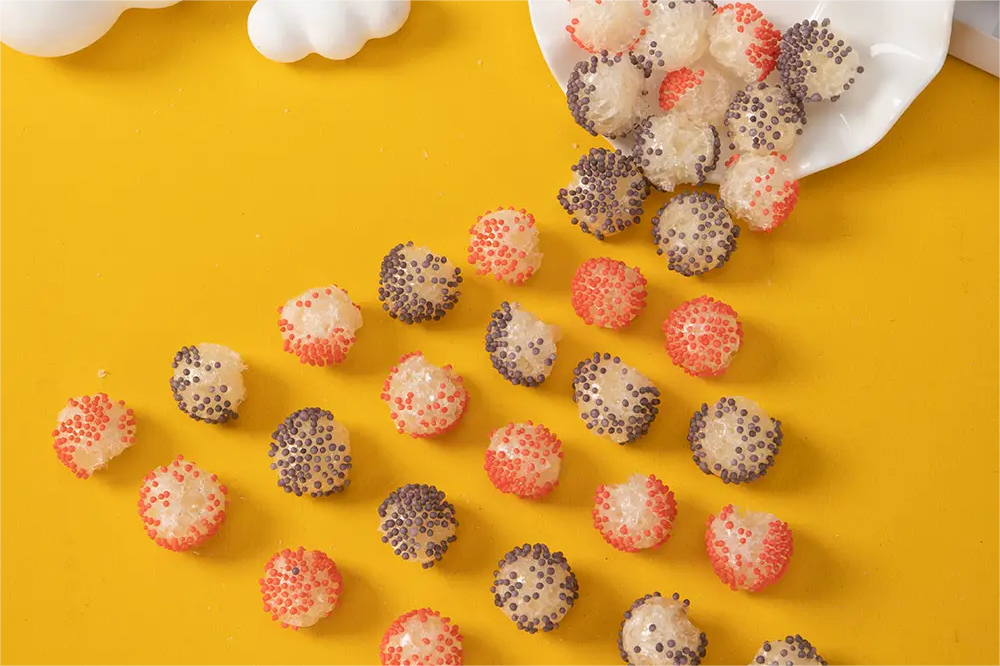Though freeze-drying and dehydrating may seem similar, they are actually two distinct processes that yield very different results, especially when it comes to candy. While both methods remove moisture from food or candy, the way they do so and the end products are quite different. So, is freeze-dried candy such as freeze dried rainbow, freeze dried worm and freeze dried geek. Freeze-dried Skittles just dehydrated? The answer is no. Let’s explore the differences.
The Freeze-Drying Process
Freeze-drying involves freezing the candy at extremely low temperatures, then placing it in a vacuum where the frozen moisture sublimates (turns directly from ice to vapor). This process removes nearly all of the water content from the candy without affecting its structure. Because the moisture is removed so gently, the candy retains its original shape, texture, and flavor to a large degree. In fact, freeze-dried candy often becomes light and airy, with a crispy or crunchy texture that is very different from its original form.
The Dehydration Process
Dehydration, on the other hand, involves exposing the candy to heat to evaporate the water content. This is typically done at higher temperatures over a longer period. Dehydrating candy removes moisture, but the heat can also change the texture, color, and even the flavor of the candy. Dehydrated candy tends to be chewy or leathery, and it can sometimes lose some of its original vibrancy in taste.
For example, dehydrated fruit like apricots or raisins becomes chewy and slightly darker, while freeze-dried fruit remains light, crunchy, and almost identical in taste to the fresh version.
Texture and Flavor Differences
One of the most significant differences between freeze-dried and dehydrated candy is the texture. Freeze-dried candy is often crispy and light, almost melting in your mouth. This texture is especially popular with freeze-dried Skittles or gummy candies, which puff up and become crunchy. Dehydrated candy, on the other hand, is denser and chewier, often lacking the satisfying crunch that makes freeze-dried treats so appealing.
The flavor of freeze-dried candy tends to be more intense compared to dehydrated candy. Because freeze-drying preserves the candy’s original structure and components without altering them, the flavors remain concentrated and vibrant. Dehydration, however, can sometimes dull the flavors, especially if high heat is involved in the process.


Preservation and Shelf Life
Both freeze-drying and dehydration are methods used to extend the shelf life of food and candy by removing moisture, which inhibits bacterial growth. However, freeze-drying is often considered superior in terms of preserving the original taste and texture of the candy. Freeze-dried candy can last for months or even years if stored properly, without losing much of its quality. Dehydrated candy, while still shelf-stable, doesn’t last as long as freeze-dried candy and may lose some of its original appeal over time.
Conclusion
While both freeze-dried and dehydrated candies involve moisture removal, freeze-drying and dehydrating are distinct processes that result in very different products. Freeze-dried candy is light, crispy, and retains more of its original flavor, while dehydrated candy is typically chewier and less vibrant in taste. So no, freeze-dried candy is not just dehydrated—it offers a unique texture and flavor experience that sets it apart from other preservation methods.
Post time: Oct-18-2024